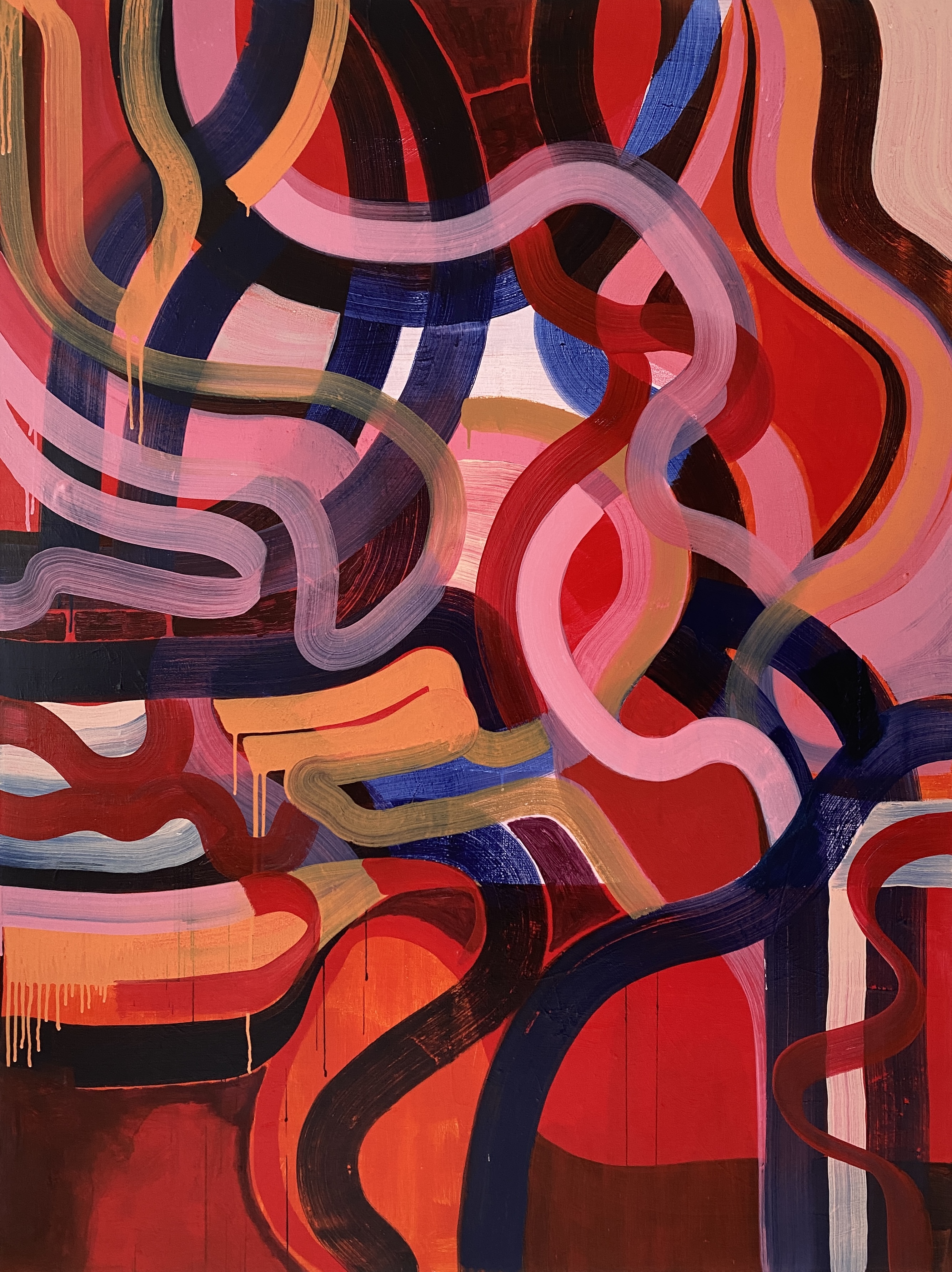



Summary
In my artistic work, I explore the question of how human consciousness arises and which factors govern the process of identity formation. I investigate to which extent painting is suitable for depicting these ambiguous phenomena. I am particularly interested in the question of whether painting, through its non-verbal approach, could succeed in enabling new perspectives. With my paintings, I create a visual world that hints at representational form but never clearly defines itself. On a formal level, I pursue the goal of creating a perceptual space within the image that is as open to interpretation as possible, allowing for questions, doubts, speculations, and even contradictions. My paintings are gateways to ideas, thoughts, and feelings the viewer can engage with.
Artistic Research
The complexity and potential of the human psyche have always fascinated me. How does individual consciousness arise, and how does it interact with the unconscious? To what extent do memory and recollection form a latent framework for perceptual processes and action strategies? What happens when identity is reversibly damaged or completely destroyed by trauma? And how do these processes impact the collective, societal level?
The Painting Process
For me, paintings are analogue storage media. They absorb color and time and capture energy in the form of physical movement. In the process, information is layered and interrelated. The image is only a fragment of a process that continually progresses beyond the boundaries of the canvas. With my medium- and large-format paintings, I create fields of events in which non-representational and figurative forms coexist, interact, and enter into an open-ended exchange.
I integrate linear signs, amorphous forms, expressive gestures, and redundant traces into the abstract color matrix. These elements can condense into three-dimensional structures through repetition, thus simulating figuration. In this way, a visual narrative emerges that can be interpreted in different ways. The painting process becomes a controlled experiment that calls up, negotiates, and sometimes rejects fragments of thought that cannot be precisely named: entropic chaos collides with structural order, progressive dissolution meets continuous construction.
The Influence of Drawing and Photography on Painting
While painting is my primary focus, I consider drawing and photography as independent fields of work that inform my painting in ways that are not immediately visible. In both areas, visual concepts emerge that are determined by the approach and aesthetics of the respective medium, which I can later incorporate into my paintings.
I understand drawing as a cognitive, largely intellectually oriented process of perception that occurs independently of external factors. In the concentrated, self-reflective process of drawing, a structuring coordinate system is created that views, records, organizes, and categorizes image data. The drawing creates a visual formula that finds its way into the painting, where it is transformed or even completely dissolved.
In contrast, the photographic process is an active engagement with the outside world. For me, photography means harmonizing attentive observation with maximum concentration and the greatest possible openness. The photographic intervention is a process of appropriation that stores spaces, objects, and lighting situations in an imaginary cosmos of images that is used for the painting.
Nina Pettinato, March 2025


